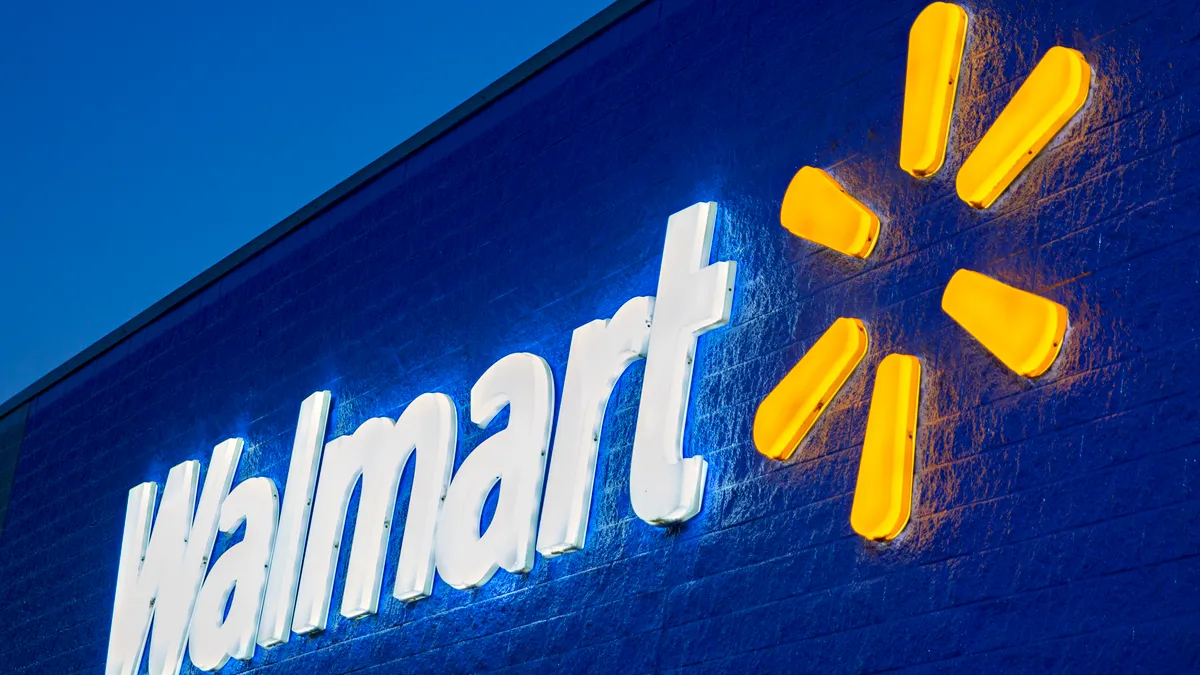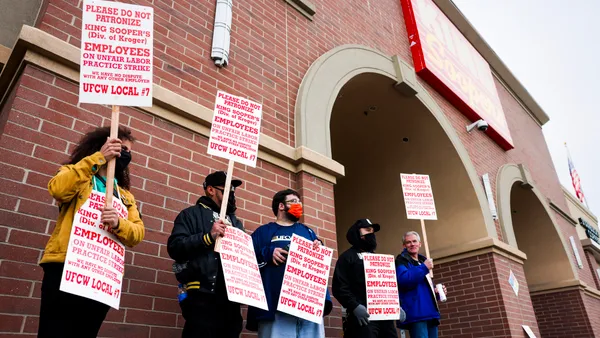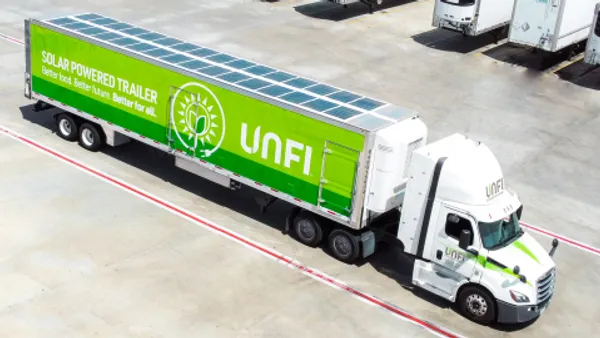Dive Brief:
- Walmart captures over a quarter (25.5%) of SNAP shoppers’ grocery dollars annually, making it by far the top destination for these consumers as inflation continues to impact their spending, according to a recent Numerator scorecard report.
- Kroger, which has the second highest share, accounts for 8.4% of yearly SNAP grocery dollars, while Albertsons sees 5.9%.
- In recent years, retailers have been working to boost their reach to SNAP participants through e-commerce expansions and special promotions. The ending of SNAP emergency allotments, however, is already impacting spending at grocery stores.
Dive Insight:
Numerator’s SNAP Shopper Scorecard report looks at spending differences between SNAP and non-SNAP households as well as retailers' sales share among this consumer group.
In addition to capturing nearly 26% of SNAP participants’ grocery spending, Walmart also clinched nearly all SNAP grocery shoppers, with 96.9% purchasing groceries from the retailer in the past year, spending an average of $2,290 annually.
Low-price retailers capture approximately twice as much share among SNAP shoppers compared to non-SNAP shoppers. However, Walmart, Dollar General, Dollar Tree, Winco Foods and other value-priced retailers are considered more vulnerable to SNAP benefit declines, according to the report.
The fortunes of supermarket chains Kroger and Albertsons are also closely tied to SNAP allotments, while retailers like Target, Publix and Whole Foods are less impacted by these changes, Numerator noted.
As for big-box retailers Costco and Sam’s Club, Costco leads Sam’s Club with overall SNAP shoppers’ dollar share, but Sam’s Club still draws in a larger percentage (42.2%) and higher overall spending.
At Amazon, 46% of SNAP households buy groceries from the online retailer compared to 57% of non-SNAP households. But while SNAP households are less likely to rely on Amazon for groceries, when they do, they spend more, according to the report.
The recent ending of SNAP emergency allotments means the average participant receives approximately $90 less in benefits per month, according ot the Center on Budget and Policy Priorities. That’s creating a more than $46 billion gap in consumer spending, according to another recent report by Numerator.
SNAP participants typically make smaller, more frequent trips to grocery shop, averaging 383 trips per year, 68% more than non-SNAP consumers, according to Numerator. SNAP consumers usually come from larger households, as well, meaning they spend more overall, particularly on groceries, the firm’s latest report noted.













